By Louise Irvine
The cornucopia, also known as the horn of plenty, is a symbol of abundance and prosperity which originated in Greek mythology. The cornucopia became popular in European harvest festivals and is now associated with the Thanksgiving holiday. Enjoy this cornucopia trivia with your friends and family around this year’s Thanksgiving table and count all your blessings.
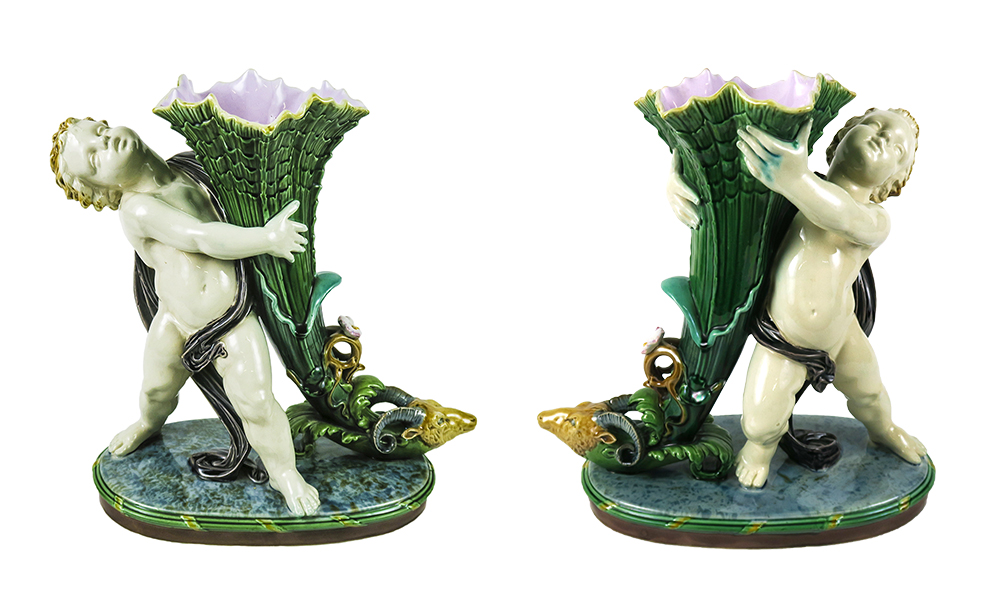
Minton Majolica Putto with Cornucopia

Thanksgiving Cornucopia
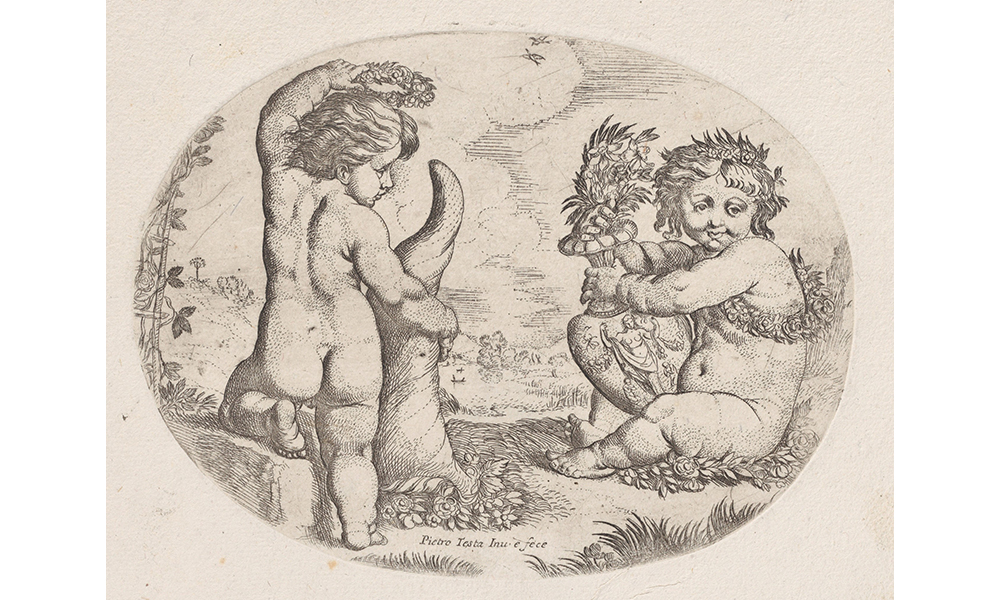
Putti with Cornucopia
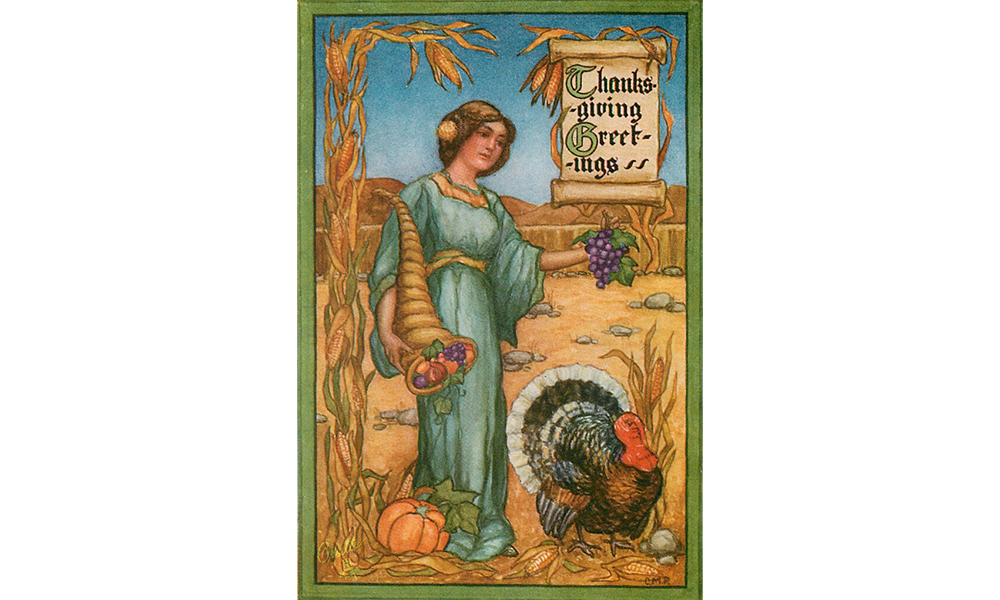
Raphael Tuck Thanksgiving Card 1912
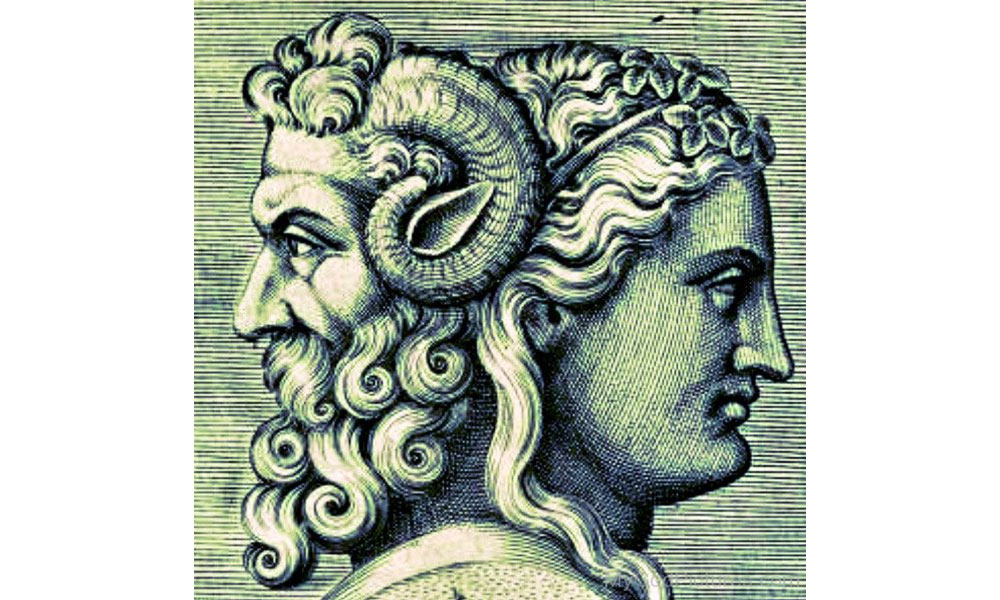
Janus Roman Deity
Classical Cornucopia
Zeus, king of the gods, was nursed as an infant by Amalthea, which means “nourishing goddess.” She is often depicted as a goat, and young Zeus accidentally broke off one of her horns with his super strength. His divine powers miraculously replenished the horn with a never-ending supply of nourishment. The cornucopia is featured on Greek vases from the 4th century BC depicting gods and goddesses of the abundant earth. Demeter, the Greek goddess of agriculture, fertility and motherhood, is often depicted cradling a cornucopia. Her Roman equivalent is Ceres, who inspired a rare 18th-century Staffordshire figure by the Turner Pottery at WMODA.
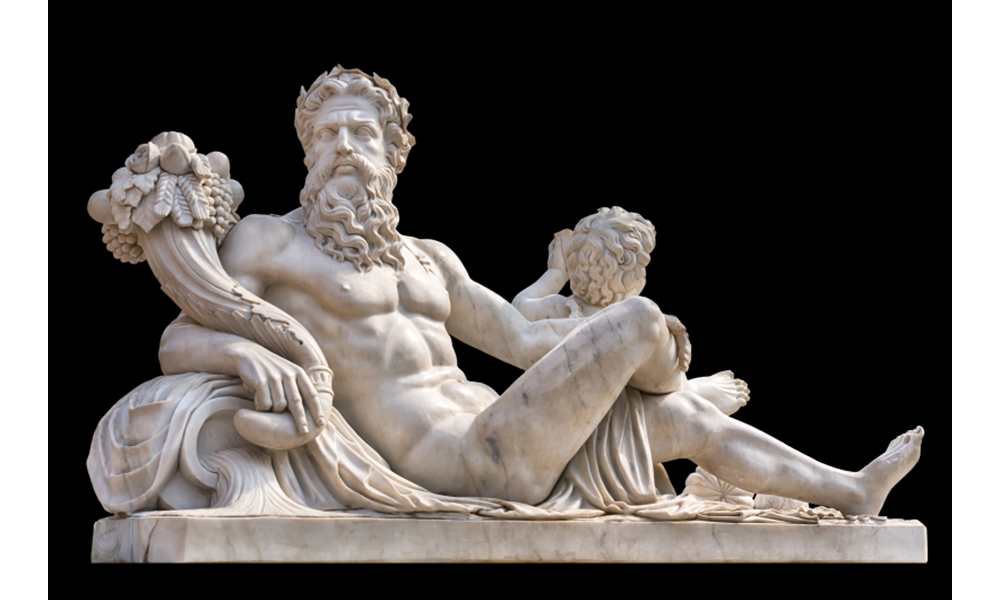
Zeus with Cornucopia
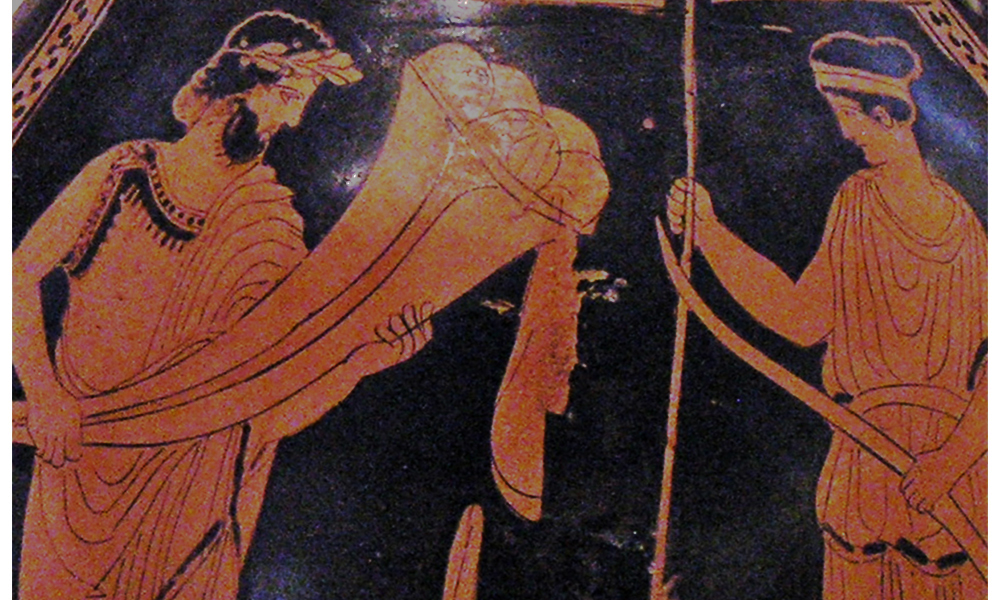
Greek Vase Detail with Plutous and Demeter
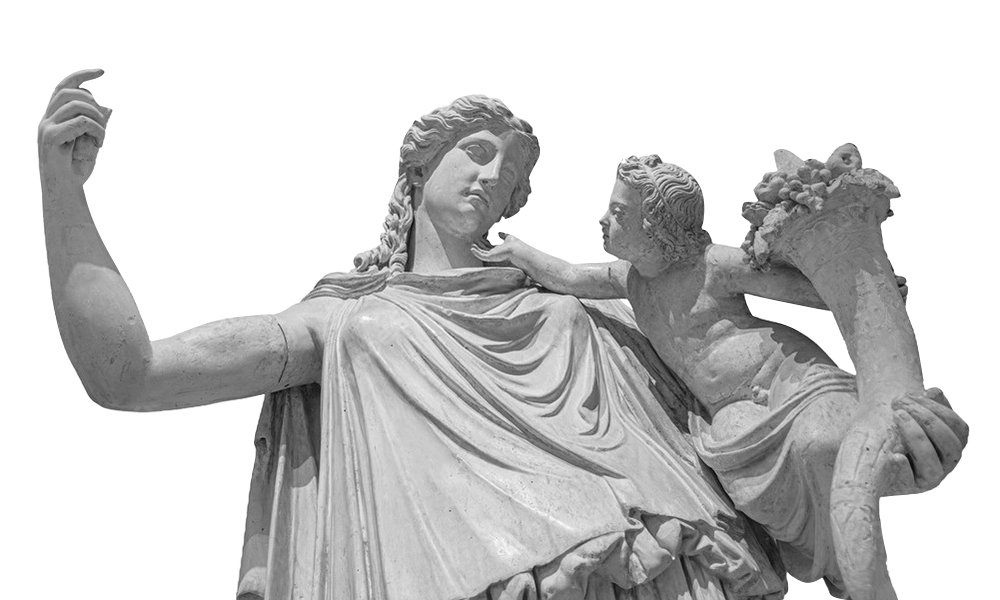
Eirene, Goddess of Peace, with Ploutos
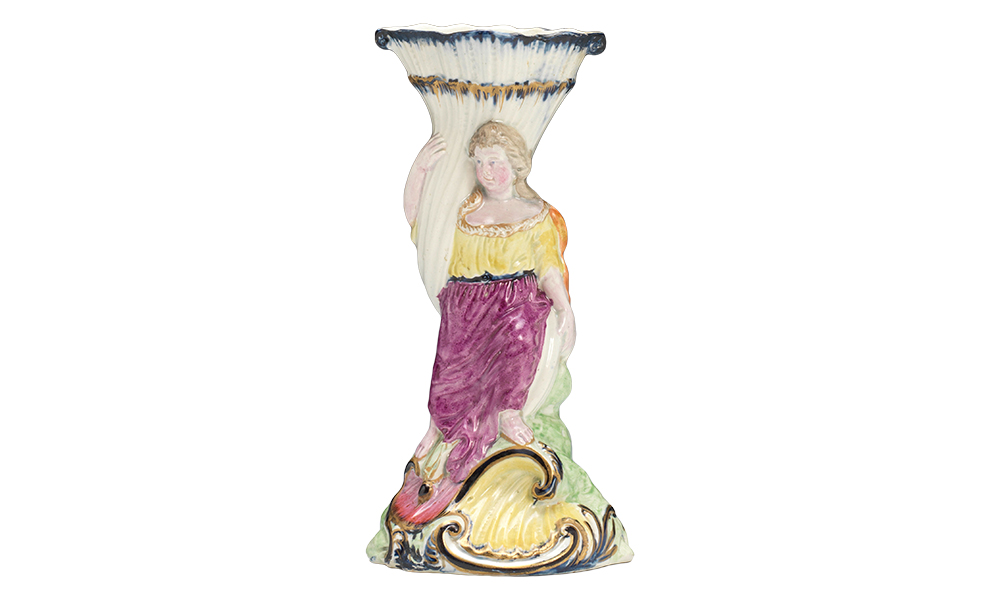
Staffordshire Ceres with Cornucopia by Turner c. 1790
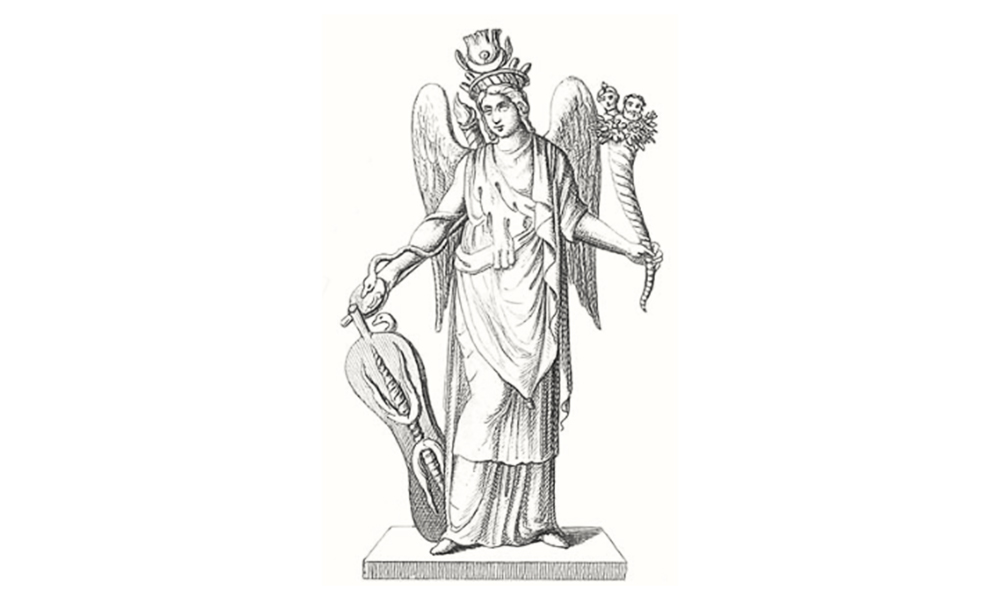
Demeter with Cornucopia
Ploutos, the son of Demeter, was the god of wealth. He was blinded by Zeus, so he would distribute his bounty indiscriminately. In classical art, he is often shown as an infant or boy holding a cornucopia in the arms of Eirene, the goddess of peace associated with the seasons. Putti were portrayed with cornucopias overflowing with fruits as allegories of the seasons and the elements. In the 1860s, the Minton pottery made an impressive pair of Majolica putti holding cornucopias waiting to be filled with fruit and flowers at Victorian banquets.
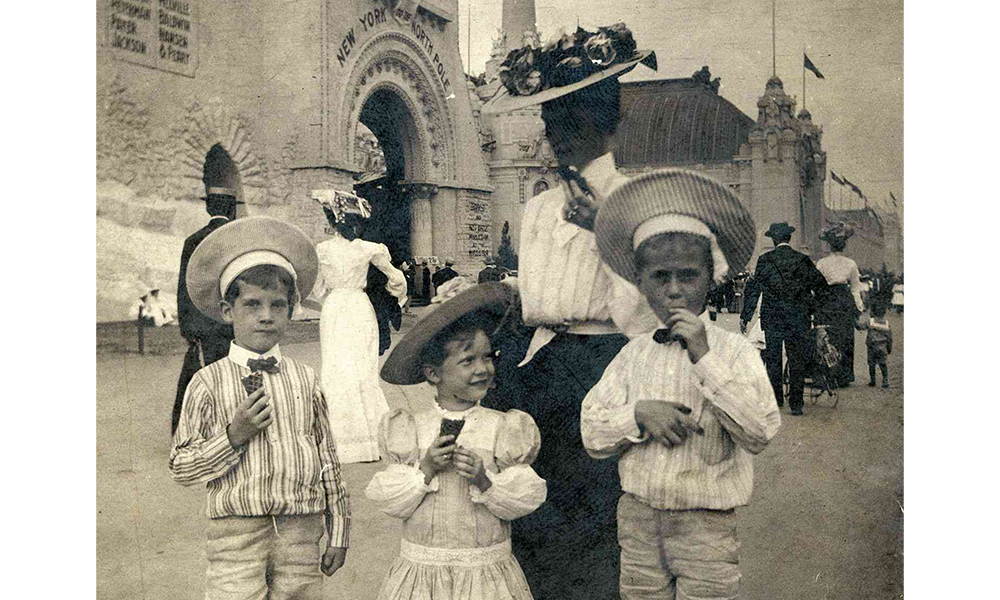
Cornucopias at St. Louis. Photo Missouri Historical Society
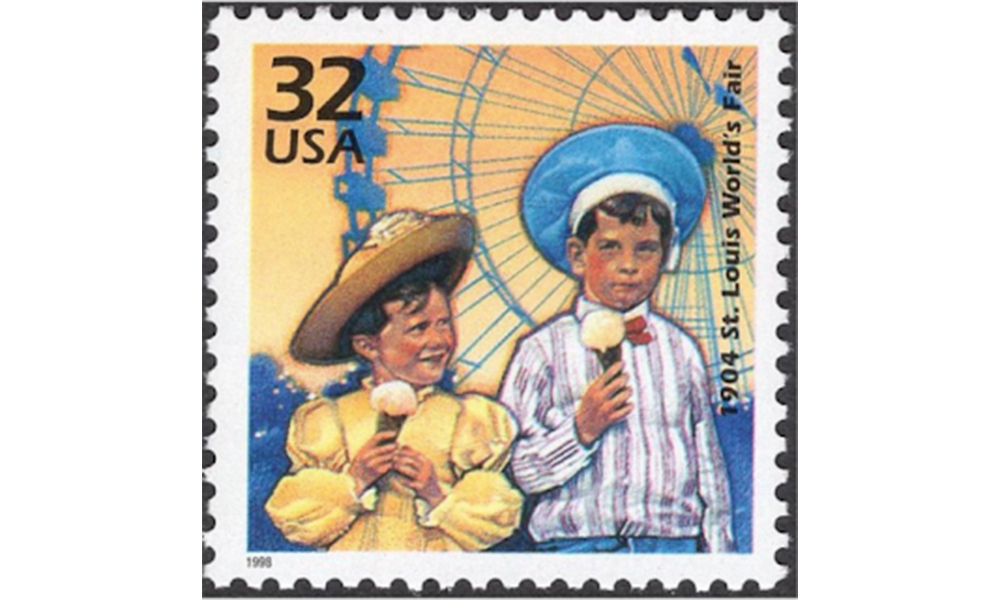
US Postage Stamp with Cornucopias 1998
Thanksgiving Trivia
The “old world” symbol of wealth and prosperity was used to attract immigrants to the “new world,” as seen in the 1876 advertisement promoting California as the “Cornucopia of the World.” At the St. Louis World’s Fair in 1904, the ice cream waffle cone was called a cornucopia after its horn shape. An enterprising waffle maker rolled his wafer-thin pastry into edible conical containers for serving ice cream at the fair. Cornucopias became the most popular way to eat ice cream and inspired a US postage stamp nearly a century later in 1998. During World War I, a cornucopia was used to encourage food preservation in a propaganda poster designed by Carter Housh. Talented illustrators also incorporated cornucopias into greeting cards for Thanksgiving, notably Raphael Tuck’s Peace and Plenty card series.
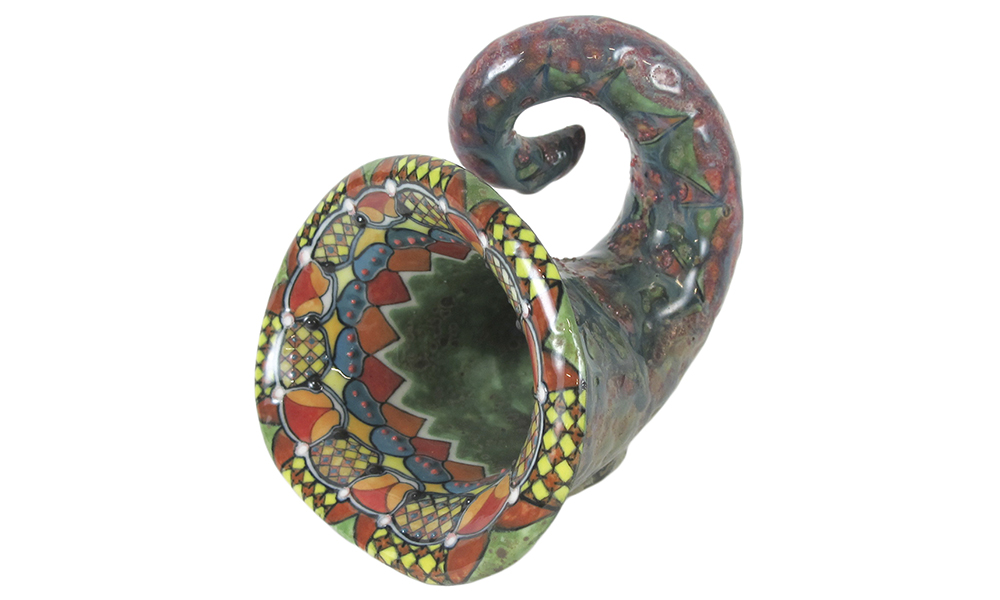
Cornucopia by D. Burnham Smith
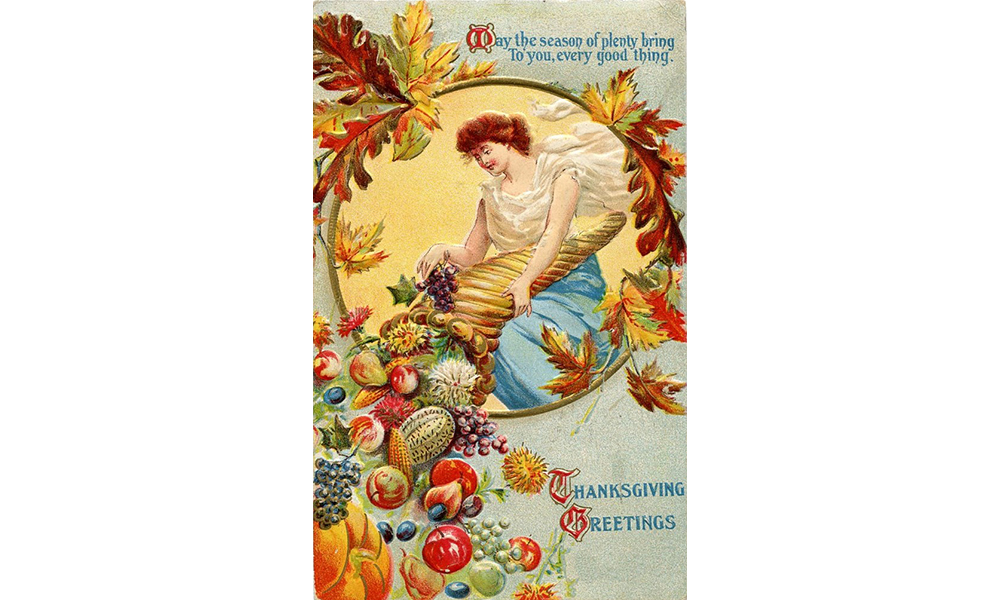
Vintage Thanksgiving Card
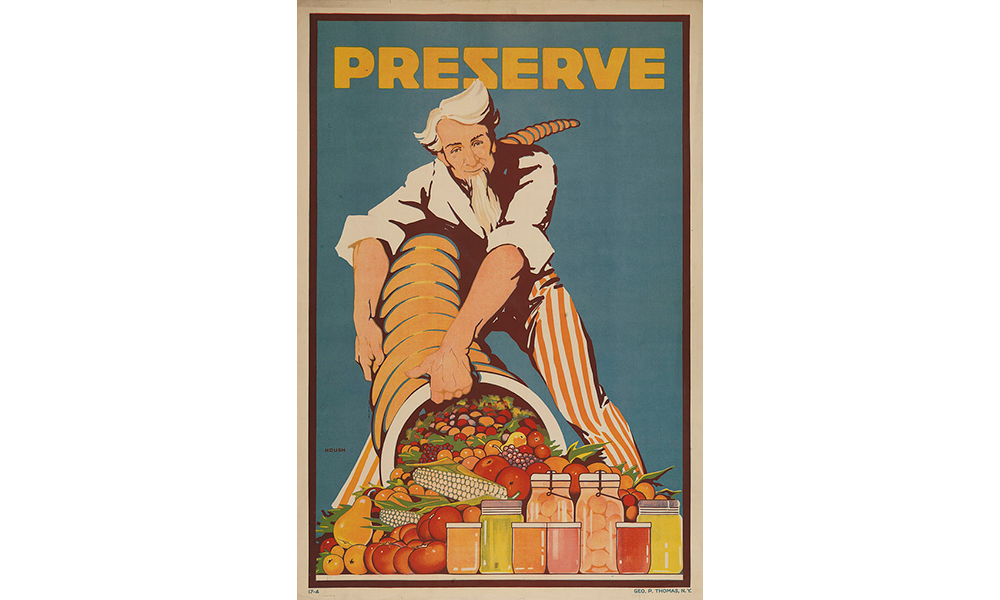
Propaganda Poster by C. Housh
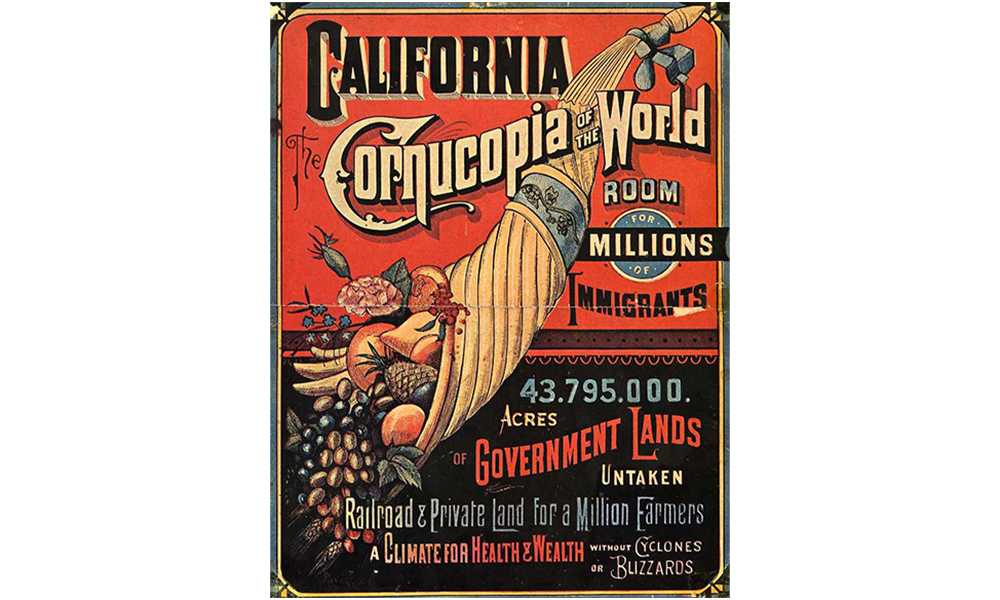
California Cornucopia of the World
The WMODA team wishes you a cornucopia full of peace, plenty and prosperity this Thanksgiving!
